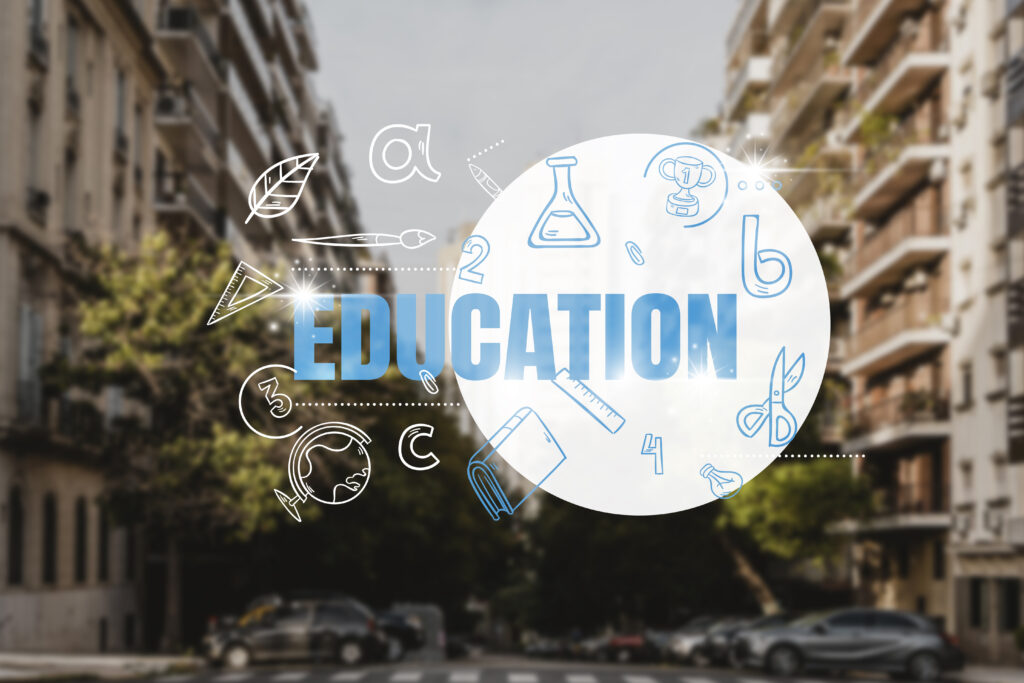Who are the good teachers? Have you ever wonders?

Introduction For any education system, teacher quality is the most important factor in school to achieve education quality . Teacher reforms with the aim to improve teacher quality have been the focus of governments around the world. Although there is general agreement on the importance of teacher quality, teachers, researchers, policy makers, practitioners, and the public have been unable to reach a consensus about what constitutes teacher quality. Quality is a value-laden term and is open to different interpretations, which leads to questions such as who is defining it based on what perspective and to what purpose. Teaching is a complex, dynamic, and context-specific function which makes it further difficult to reach an agreement on the definition. The investigation of such complex phenomenon is never easy. The way teacher quality is defined by an education system will have implications for educational policies and practices, especially related to teachers, such as selection, development, evaluation, and compensation . The review attempts to bring together different streams of literature in one place. The literature on teacher quality can be divided based on different characteristics of teachers, teacher practices and their results. However, successful education systems around the world tend to focus on all aspects. I divided the literature of teacher quality into five categories: a) personal characteristics of a teacher b) teacher qualifications and experience c) Teaching quality d) students learning outcomes and e) broader outcomes. Personal Characteristics The first body of research focuses on identifying certain personality and psychological traits that may distinguish a good teacher from a not-so-good teacher (Thompson, 2016). The characteristics or attributes of a quality teacher has been a topic of research for a long time, such as Plato examining the unusual and highly effective teaching method of Socrates (Watson et al., 2010). Since the 1920’s many perspectives have emerged on the characteristics of a quality teacher. Each of these perspectives falls under one of two main categories: teacher personality and teacher ability (Beishuizen et al., 2001). Some of these characteristics such as personality, beliefs, attitudes, and verbal ability may vary over time for a given teacher (Strong, 2011). Researchers have explored the characteristics of a quality teacher in the perception of students, teachers, parents, administrators, and education professors (Watson et al., 2010). For this section, I focused only on the studies that discuss teacher personal characteristics based on the opinions of students (Beishuizen et al., 2001; Hollis, 1935; Kutnick & Jules, 1993; Szűcs Ida, 2017; Taylor, 1967; Walker, 2008; Witty, 1947), and teachers (Rushton et al., 2007; Watson et al., 2010). In the 1930s, German researchers interviewed 10,000 students to explore the characteristics of a good teacher. Good teachers for most of them were joyful, patient, friendly, objective, understanding, and fair in student assessment (Szűcs Ida, 2017). In the context of the UK, Hollis (1935) asked 8,043 students of different ages to rank seven teacher personality traits. The quality of ‘explaining difficulties patiently’ was top on the chart. ‘Being friendly and sympathetic’ was ranked second. The third was ‘just and fair’ with ‘humor’ ranked fourth. The fifth characteristic was ‘allowing [students] to ask plenty of questions,’ whereas ‘having wide interests’ was sixth and ‘discipline’ was seventh most important. In an attempt to answer the question of ‘What are the outstanding characteristics of a good teacher? Paul Witty (1947) reviewed the letters from 12,000 students in the USA on the assumption that ‘the statements of large numbers of pupils will indicate factors of real significance in successful teaching’ (p. 662). The author found twelve characteristics that appeared the most in the letters i.e., 1) cooperative, democratic attitude 2) kindliness and consideration for the individual 3) patience 4) wide interests 5) personal appearance and pleasing manner 6) Fairness and impartiality 7) Sense of humor 8) Good disposition and consistent behavior 9) Interest in pupils’ problems 10) Flexibility 11) Use of recognition and praise 12) Unusual proficiency in teaching a particular subject. The comparatively latest similar study is a longitudinal study by Robert J. Walker (2008), who collected students’ responses included in essays from different pre-service undergraduate students in the USA over a period of 15 years. The author asked the students to write an essay on the most effective teacher (i.e., a teacher who had been most successful in helping them to learn) from their school lives. Students read their essays in the class and discussed the characteristics (teacher personal qualities) of the most effective teacher in their opinion. The author identified twelve most common personal and professional characteristics that include: prepared, positive attitude, high expectation, creativity, fairness, approachability, sense of belonging, compassion, sense of humor, respect for students, forgiving, and admit mistakes. Notably, students emphasized the personal qualities of their memorable teacher rather than academic qualifications although the question they were asked to address was focused on effectiveness in helping them. ‘Students seldom mentioned where teachers attended school, what degrees they held, or whether they had been named a “Teacher of the Year.” Instead, students focused on these teachers’ nurturing and caring qualities.’ (Walker, 2008, p. 64). The above-reviewed literature on the personal traits of a quality teacher based on the student’s perceptions is diverse in terms of context and timeline. However, many of the personal traits such as friendliness, sense of humor, positive attitude, fairness, respect, and patience are common. The strand of research based on the perceptions of teachers regarding a quality teacher attribute is far smaller than the literature (Watson et al., 2010). The research into teacher personality traits from teachers’ perspectives also generates a long list of characteristics, and like the research based on students, there are many traits such as fairness, caring, enthusiasm and like or love to children that are common in the literature (Strong, 2011; Stronge, 2007, 2018). Watson and others (2010) conducted 66 focus group sessions with middle school teachers in the USA over a period of three years to explore the teacher’s perspective of the effective teacher with each session comprised of 8 to 12 teachers with a
The Role of Artificial Intelligence In Education and Implications For Teachers

Introduction The field of Artificial Intelligence in Education (AIED) has been around for decades. However, with the passage of time, it has gained more clarity as well as potential. AIED is high on research, policy, and political agenda around the world. The focus of the field remained, mainly, on the creation of systems and tools that can be as effective as one on one human tutoring or helping humans in tutoring on domain level knowledge. However, the focus is changing due to many factors. The use of AI, robotics, data science, and other related technologies would not only change the nature of many professions including education but also will change the types of skills valued in the market, generally referred to as 21st-century skills. The general learning skills and competencies such as critical thinking, metacognition, problem-solving, flexibility, and collaboration will be more important than technical and subject knowledge. New education theories also advocate for more personalization and agency in educational experiences. These trends show that not only AIED but education will go under a transformation in near future. The AIED will change to respond to the changing nature of education and education will also change due to the developments in AIED.This paper is an attempt to provide a brief literature review of AIED with a special focus on its implications for teachers. The research questions to guide this study are: What role AI is expected to play in education and why? and what implications it will have on the role of teachers? The first section will discuss the role of AI in education in general and with respect to 21st-century skills. The next section will narrow down the discussion on the implications of AI on teachers. This review is based on the searches on the UMD library general search portal and DB Finder (EBSCOhost) under the education category, and Google Scholar. In addition to this general search, I also consulted the articles from the 19th and 20th AIED international conferences. I started with a general search of articles/books with keywords, “Artificial Intelligence in Education”, “Artificial Intelligence and Future of Education”, and Artificial Intelligence and Future of Teachers. I mainly focused on the latest articles in 2015 and onwards. I also narrow down my focus only to developed countries’ contexts. After an initial search of articles and books, I started reading the most relevant articles and used snowball techniques to find new articles (not limited to earlier stated timelines) from the above-cited sources. I included a few articles related to Robotics and 21st Century Skills in my search as I advanced on my topic.A Case for AI in Education and 21st Century Skills Two main reasons for the role of AI in education cited in most of the literature reviewed in the study are changing need of the market (Catalline, 1999; Hanna, 1998; McArthur et al., 2005; Lukin, 2018; Toumi, 2018; Selwyn, 2019) and advanced educational learning theories (Rolls & Wylie, 2016; Lukin, 2018; Robert-Mohoney et al., 2016; Selwyn, 2019). The availability of cheap processing power, big data availability, data storage capacity, and availability of fast internet have resulted in remarkable breakthroughs in the field of machine learning and artificial neural networks. Driverless cars, image analysis, real-time language processing, and translation, fraud detection, autonomous vehicles, automated customer service, synthetic art, process control, service robots, and many other applications are heavily relying on these two fields. Although the use of these applications is currently at a limited scale, these trends are an indication of a profound impact on the labor market and the competency requirements (Toumi, 2018). Given the value of the economy to a country, education systems tend to adapt to the current as well as futuristic needs of the market. In response to the AI age, some education functions will become obsolete and others will gain more prominence. The literature on 21st-century skills included in this review points out that there are many versions of these skills with some commonality as well as differences. The World Economic Forum in its 2015 report called New visions of Education: Unlocking the Potential of Technology identified the 16 most critical 21st-century skills required by future economies. The report divided these skills into three categories:Foundational literacies that include conventional literacy, numeracy, ICT literacy, cultural and civic literacy, financial literacy, and scientific literacy.Character qualities such as curiosity, persistence, adaptability, leadership, initiative, and cultural and social awareness.Competencies comprise critical thinking, creativity, problem solving, and communication, and collaboration.By contrast, Trilling and Fadel (2009) suggested a slightly different skill set again divided into three categories:Learning and innovation skills: learning to learn and innovate, critical thinking and problem solving, creativity and innovation, communication, and collaboration.Career and life skills: flexibility and adaptability, productivity and accountability, initiative and self-direction, social and cultural interaction, and leadership and responsibility.Digital literacy skills: information literacy, media literacy, and ICT literacy.These two examples provide a short overview of the debate concerning the skills required for the market in the future. Noah (2018) noted that current education systems are not designed to equip the students with most of these skills. ‘Numerous innovations in the education technology space are beginning to show potential in helping address skills gaps. These technologies have the potential to lower the cost and improve the quality of education’ (World Economic Forum, 2015, p-1).The second type of impetus of AI in education comes from the new learning theories advocates for more student-centered, personalized educational experience, and agency (Collins & Halversion, 2010). The logic suggests that personalized technology represents a state-of-the-art alternative to traditional models of schooling, pedagogy, and organization that are irrelevant to the future digital age (Robert-Mohoney et al., 2016). Different components of artificial intelligence such as data mining, learning analytics, algorithm computations, and adaptive learning systems all have potential roles in this new emerging version of education. Regardless of the reason, the majority of the literature in the review agreed that AI will have a significant role in education. The role can be too broad to be covered in this paper.
The Role of Technology in Education: Virginia Schools and Post-Pandemic Adaptations

The integration of technology into education has rapidly accelerated in recent years, with Virginia schools at the forefront of this transformation. Post-pandemic, the reliance on virtual learning programs reshaped the traditional classroom and introduced both new opportunities and significant challenges. As schools adapt to the changing landscape of education, they are also grappling with the limitations posed by the end of ESSER (Elementary and Secondary School Emergency Relief) funding. The Surge in Technology Adoption Before the pandemic, many Virginia schools were already incorporating technology into their classrooms, with digital tools like tablets, laptops, and interactive whiteboards becoming more common. However, the COVID-19 pandemic drastically shifted the dynamic. Schools were forced to rapidly adopt virtual learning platforms to ensure continuity of education during lockdowns. In the post-pandemic world, this reliance on technology has not only remained but expanded. Virtual learning programs, initially seen as temporary measures, are now being integrated as permanent fixtures. Platforms like Google Classroom, Microsoft Teams, and Zoom are still widely used, even in hybrid settings where students may be physically present in class while engaging with digital tools. This shift has led to a reevaluation of how students learn and how teachers teach, moving toward a more tech-centric model that fosters flexibility. Effectiveness of Virtual Learning As Virginia schools continue to navigate the post-pandemic landscape, one question remains: how effective is virtual learning? Research and feedback from educators suggest a mixed outcome. On one hand, virtual learning has provided an unprecedented level of accessibility. Students who struggle with traditional classroom environments—whether due to health concerns, social anxieties, or other personal challenges—have benefited from the flexibility of remote learning options. Furthermore, digital tools have allowed teachers to offer more personalized instruction, using data analytics to identify and address individual student needs more effectively. However, the effectiveness of virtual learning also varies widely based on factors such as access to reliable internet, the home environment, and student engagement. In more rural or low-income areas of Virginia, students often face challenges in accessing the necessary technology or maintaining stable internet connections. This digital divide has prompted state and local education leaders to push for better infrastructure and equitable access to technology across all regions. Challenges as ESSER Funding Ends One of the biggest challenges Virginia schools now face is the impending end of ESSER funding. This federal funding, provided to help schools navigate the financial impacts of the pandemic, was a lifeline for many districts. Schools used ESSER funds to purchase devices, improve internet access, and develop virtual learning programs that allowed education to continue during the pandemic. As ESSER funding phases out, many school districts are left with difficult decisions. Without this financial support, maintaining the level of technology integration that has become standard may be challenging. Schools that invested heavily in virtual platforms and devices must now find alternative funding sources to sustain these initiatives. The end of ESSER funding could also impact staffing. Many districts used these funds to hire additional staff, including IT specialists and instructional technology coaches, to support the integration of technology into the classroom. Without continued funding, retaining these positions may be difficult, further straining the capacity of schools to effectively implement digital learning strategies. Future Outlook for Virginia Schools Despite these challenges, Virginia schools are committed to moving forward with technology integration. Some districts are exploring public-private partnerships to fund technology upgrades and ensure students continue to have access to the tools they need for success. Additionally, state-level initiatives are being discussed to address the digital divide and ensure that all students have equitable access to learning technologies. One promising development is the focus on blended learning models, where in-person instruction is supplemented with digital resources. This approach allows for more individualized instruction while still maintaining the benefits of face-to-face interaction. Teachers are being trained to integrate technology in more meaningful ways, using it not just as a tool for delivering lessons but as a means of enhancing student engagement and fostering collaboration. Conclusion The role of technology in Virginia’s education system is undeniable. While virtual learning programs have shown effectiveness in certain areas, the challenges of maintaining these systems as ESSER funding ends cannot be ignored. Schools must find innovative solutions to continue integrating technology into classrooms while addressing issues of accessibility and funding. As Virginia continues to navigate this post-pandemic educational landscape, it is clear that technology will remain a central component in shaping the future of learning.
Impact of the New Accountability System in Virginia

The proposed new accountability system by the Virginia Board of Education aims to enhance the evaluation and support of schools across the state. While the intent is to improve transparency and educational standards, this overhaul has raised concerns, particularly regarding its potential impact on low-performing schools. This article analyzes how the new framework may affect these institutions and the broader educational landscape in Virginia. Overview of the New Accountability System The Virginia Board of Education’s new accountability framework separates the existing accreditation system into two components: an accreditation system that assesses compliance with state laws and an accountability system that provides clear information on student performance. This change is part of a broader initiative led by Governor Glenn Youngkin’s administration to address declining student achievement and enhance educational outcomes. According to a report provided to the General Assembly, approximately 60.5% of schools are projected to be off track or in need of intensive support under the new standards, indicating significant challenges ahead for many institutions. The previous system had labeled only 11.5% of schools as not fully accredited, which raises questions about the accuracy and effectiveness of prior evaluations. Risks for Low-Performing Schools One major concern is that assigning ratings—such as letter grades or star systems—could stigmatize low-performing schools, leading to decreased enrollment as families seek higher-rated alternatives. This phenomenon could exacerbate existing inequities, leaving behind students who need support the most. Critics argue that labeling schools based solely on standardized test scores fails to account for various external factors affecting student performance, such as socioeconomic status and community resources. Furthermore, there are fears that the emphasis on ratings may lead schools to prioritize test preparation over holistic educational practices. For instance, schools with large populations of English Language Learners (ELLs) may struggle to achieve high scores due to language barriers that do not reflect their actual growth or potential. A 2022 report indicated that Virginia ranks 32nd out of 46 states in fourth-grade reading scores for ELL students, highlighting systemic challenges that must be addressed. Importance of Transparency and Support Supporters of the new accountability system argue that increased transparency is crucial for driving improvements in education. By providing detailed performance data, stakeholders—including parents and educators—can make informed decisions about resource allocation and support strategies. However, transparency must be coupled with a nuanced understanding of educational success metrics. The new system aims to separate mastery from growth in evaluating school performance. For example, elementary school performance will weigh 65% mastery, 25% growth, and 10% readiness, while middle schools will have a slightly different weighting. This approach seeks to ensure that students not only meet academic standards but also demonstrate growth over time. Balancing Accountability with Support As Virginia implements this new accountability framework, it is essential to balance accountability measures with adequate support for low-performing schools. This includes targeted interventions that consider each school’s unique context and challenges. Additional funding for professional development can equip teachers with strategies to better support diverse learners, including ELL students who face distinct barriers. Moreover, establishing collaborative networks among schools can facilitate resource sharing and best practices, ultimately benefiting students across the board. The Virginia Board of Education has indicated its commitment to providing targeted support where it is most needed, but this requires ongoing dialogue with educators and community stakeholders. The Virginia Board of Education’s proposed accountability system represents a significant shift in how educational performance is assessed. While the goals of transparency and high standards are commendable, careful consideration must be given to the potential repercussions for low-performing schools. By focusing on supportive measures alongside accountability metrics, Virginia can work towards an educational landscape that fosters equitable opportunities for all students, ensuring every child has access to quality education regardless of their circumstances. As discussions continue around this pivotal reform, it is crucial for stakeholders to engage actively in shaping a system that not only holds schools accountable but also empowers them to succeed in their mission of educating all students effectively.
Preparing Students for the Workforce: Virginia Schools Collaborate with Local Businesses and Higher Education

In today’s rapidly evolving job market, Virginia schools are stepping up to prepare students for the workforce of tomorrow. By partnering with local businesses and higher education institutions, schools across the state are working to bridge the gap between traditional education and the practical skills needed for success in modern industries. These collaborative efforts aim to provide students with more relevant, hands-on learning experiences that align with real-world employment opportunities. The Changing Landscape of Workforce Preparation Historically, education systems have focused primarily on academic achievement, with less emphasis on career-readiness skills. However, as the job market becomes more specialized and technology-driven, the needs of employers are shifting. Employers are looking for candidates with not only academic knowledge but also the ability to adapt, problem-solve, and apply practical skills in various industries. Virginia schools have recognized this change and are increasingly seeking to adapt their curriculum to better prepare students for these evolving demands. The goal is no longer just to ensure students graduate with a diploma but to equip them with a toolkit that includes technical skills, soft skills, and the work experience necessary to thrive in their chosen career paths. Collaborations with Local Businesses One of the key strategies Virginia schools are using to prepare students for the workforce is through partnerships with local businesses. These partnerships allow students to engage in internships, apprenticeships, and work-based learning experiences that provide hands-on exposure to real work environments. For instance, many high schools in Virginia have developed Career and Technical Education (CTE) programs that connect students with local employers in industries such as healthcare, manufacturing, information technology, and skilled trades. Through these programs, students have the opportunity to gain practical experience while still in school, allowing them to better understand the demands and expectations of the workplace. In regions like Northern Virginia, where tech companies and cybersecurity firms are thriving, schools are working with businesses to design specialized courses and training programs tailored to the needs of the industry. These initiatives help students learn coding, cybersecurity, and data analysis—skills that are in high demand and lead to lucrative career opportunities. Businesses benefit from these partnerships as well, gaining access to a pipeline of young, motivated workers who are eager to learn. Many companies that participate in school internship programs are able to recruit top talent directly from their local schools, reducing the need for extensive external hiring processes. Collaboration with Higher Education Institutions Virginia schools are also forging stronger connections with higher education institutions to offer students a more seamless transition from high school to college or technical training programs. Dual-enrollment programs, where high school students can take college courses and earn credit toward a degree, are becoming increasingly common. For example, many high schools across the state have partnered with community colleges and universities to offer dual-enrollment programs in fields such as engineering, nursing, and business. These programs not only give students a head start on their post-secondary education but also help reduce the cost and time required to earn a degree. Additionally, partnerships with higher education institutions allow students to explore specialized career fields that may not be fully covered in a traditional high school curriculum. For instance, the University of Virginia and Virginia Tech both offer outreach programs that allow high school students to explore STEM (Science, Technology, Engineering, and Math) fields through workshops, camps, and mentorship programs. These collaborations between schools and colleges are critical in helping students make informed decisions about their future careers and education pathways. By exposing students to higher education opportunities early, schools can help them develop clear, achievable goals for the future. Addressing the Skills Gap A common theme in the collaboration between Virginia schools, businesses, and higher education institutions is the desire to address the so-called “skills gap.” This gap refers to the disconnect between the skills employers need and the skills that job candidates possess. While traditional education is crucial, many industries require technical or trade skills that are not always emphasized in standard academic curricula. Virginia’s focus on CTE programs is one way the state is addressing this gap. These programs offer specialized training in high-demand fields like automotive technology, construction, healthcare, and IT. Students gain hands-on experience in these areas, earning industry-recognized certifications that make them more competitive in the job market. In addition to technical skills, Virginia schools are placing a stronger emphasis on “soft skills” such as communication, teamwork, and problem-solving. Employers across industries have highlighted the importance of these competencies, and schools are responding by incorporating them into classroom activities and projects. Overcoming Challenges Despite the progress being made, challenges remain. One of the primary issues facing schools is ensuring that all students have equal access to workforce preparation opportunities. Rural areas in Virginia, for example, may have fewer local business partnerships or higher education institutions available to offer internships or specialized training programs. To address this, some districts are turning to virtual learning and online training platforms, allowing students to access career readiness programs remotely. Additionally, the state government is working to provide more funding and resources to schools in underserved areas, ensuring that students across Virginia have access to the skills and opportunities they need to succeed. Another challenge is keeping up with the fast-paced changes in the job market. As new industries emerge and technology continues to evolve, schools must constantly adapt their programs to stay relevant. This requires ongoing collaboration between educators, businesses, and policymakers to ensure that curriculum updates and resource allocations reflect the realities of the workforce. The Future of Workforce Preparation in Virginia As Virginia continues to evolve its approach to workforce preparation, the collaboration between schools, local businesses, and higher education institutions will remain a central strategy. These partnerships not only provide students with valuable real-world experiences but also help align education with the needs of employers, ensuring that graduates are well-equipped for success in the modern workforce. By focusing on career and technical education, soft skills development, and equitable access to training opportunities, Virginia schools




